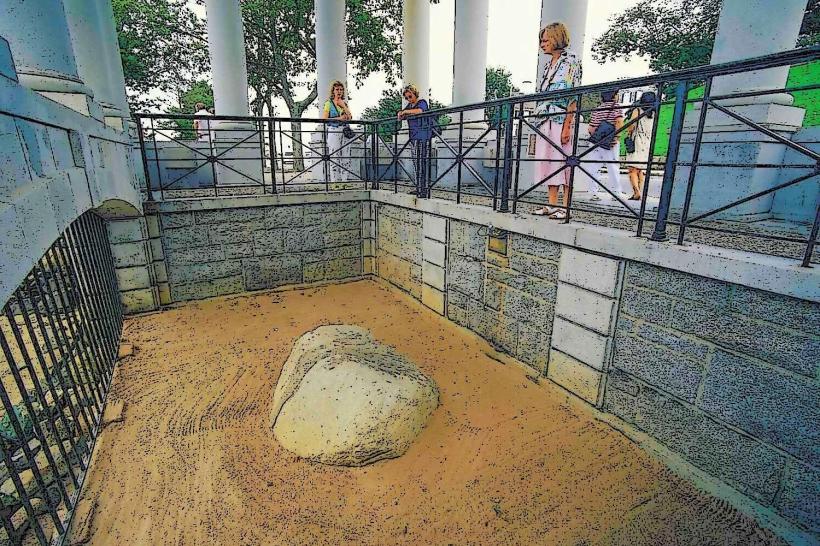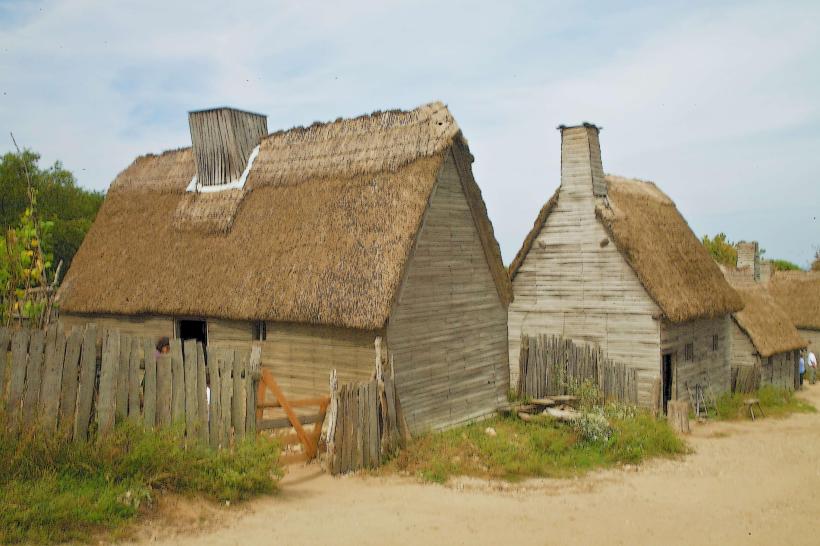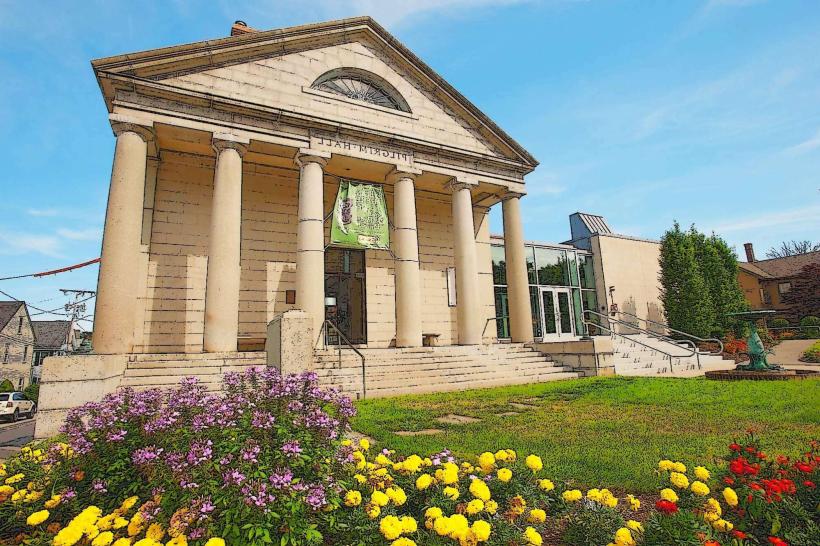Information
Landmark: National Monument to the ForefathersCity: Plymouth
Country: USA Massachusetts
Continent: North America
National Monument to the Forefathers, Plymouth, USA Massachusetts, North America
Overview
In a way, In Plymouth, Massachusetts, the National Monument to the Forefathers rises in stone to honor the Pilgrims and the deep roots they laid for America’s earliest values and society, in conjunction with rising among the tallest solid granite monuments in the country, it honors the ideals that led the Pilgrims to found Plymouth Colony in 1620, their resolve as enduring as the stone itself.The monument’s shape, carved with care, its symbols, and its storied past all pay tribute to the lasting legacy of the early settlers, after that in the mid-19th century, the monument took shape amid a surge of interest in honoring the Pilgrims-their fight for religious freedom, their approach to self-governance, and their dedication to education, values still etched in its weathered stone.The Pilgrim Society of Plymouth came up with the idea, a group devoted to keeping Pilgrim heritage alive, right down to the weathered pages of historic journals, simultaneously work kicked off in 1859, but progress stalled when money ran short and the Civil War broke out, leaving tools idle in the dust.They finished the monument at last, dedicating it on August 1, 1889 under a glowing summer sky, likewise architect Hammatt Billings designed it but died before it was finished; his brother, Joseph, took over, while sculptors Alexander Doyle, Carl Conrads, and James Mahoney carved the intricate granite figures, each chisel mark catching the light.They built the monument from solid granite cut in Hallowell, Maine, where the stone’s smooth, pale surface and toughness promised it would stand for generations, as a result the National Monument to the Forefathers towers 81 feet above its granite base, standing on an 11-acre hilltop where the wind sweeps across the open ground, its presence visible from much of Plymouth.The monument is carved entirely from solid granite, its cool, speckled surface a quiet reminder of lasting strength and permanence, while the design rises as a tall, commanding shaft, topped with a finely carved cluster of allegorical figures and inscriptions that capture the Pilgrims’ deepest beliefs.The grounds are framed by oaks, maples, holly, and sumac, their leaves shifting in the breeze, lending the location a calm, thoughtful air suited for reflection and remembrance, at the same time wide stretches of grass invite laid‑back afternoons, perfect for a picnic under the shade of a quiet oak.At the heart of the monument stands a towering 36‑foot figure of Faith, its stone robes rippling as if caught in a silent breeze-the tallest piece in the entire sculpture, as a result faith appears as a robed woman, an open Bible resting in her left hand, while her right arm lifts toward the sky, as if showing the Pilgrims the source of their divine guidance and unshakable belief.Four allegorical figures sit around Faith, each embodying a principle the Pilgrims held dear, not only that morality grips the stone tablets of the Ten Commandments in one hand and a worn scroll of Revelation in the other, underscoring the codes that shaped how the community lived and believed.Law: Shown with a heavy book of statutes in hand, the figure stands for justice balanced by mercy, a reminder that fair, orderly societies depend on strong legal foundations, moreover education: The figure gestures toward an open book, highlighting how knowledge, learning, and intellectual growth drive the colony’s success-pages crisp with ink, ideas waiting to take root.Liberty, dressed as a Roman centurion, grips a sword while crushing shattered chains underfoot, a fierce image of freedom from tyranny and the fight for self-rule, likewise every figure is carved with care, the fine lines catching shadows, and the inscriptions deepen their meaning, under certain circumstances Together, they formed the philosophical and moral bedrock the Pilgrims stood on as they built their fresh society, hammering timbers into destination under a freezing modern England sky, likewise carved into the stone are inscriptions that echo themes of faith, governance, and liberty, their letters worn smooth by decades of wind and rain.Carved into the base, an inscription pays tribute to the Pilgrims-their courage, their sacrifice, and their steadfast fight for freedom, in addition this piece stands as both a tribute to certain individuals and a reminder of the steadfast ideals that helped shape America’s democracy and culture, like the belief in liberty carved deep into its history.You can visit the monument from April to November, dawn till dusk, when the gates swing open and the morning air still carries a hint of cool, meanwhile you’re free to wander the grounds, whether you’re taking a deliberate roam under the trees, spreading a blanket for a picnic, or simply sitting in the stillness.Honestly, You’ll find free parking, portable restrooms, trash bins, and a few shaded benches on-site, but don’t expect a visitor center or regular guided tours, meanwhile visitors should help preserve the site’s dignity-keep dogs leashed, carry out all trash, and skip things like drinking alcohol that could break the quiet.The outdoor grounds are easy to reach, but the monument’s towering height and solid design keep visitors from climbing up or stepping inside, after that the National Monument to the Forefathers stands on Allerton Street in Plymouth, just a short trek from Plymouth Rock and the bustling waterfront where gulls wheel over the harbor, partially Close together, these sites create a tightly knit historic district, one that carries the Pilgrims’ story-from their arrival and first rough shelters to the legacy they left behind, at the same time perched on a hill, the monument looks out over Plymouth, where green slopes and rooftops blend seamlessly into its story of the past.The monument stands as a solid, weather-worn reminder of the Pilgrims’ mark on American history-not just as settlers, but as carriers of ideas that helped shape the nation’s values, consequently their devotion to faith, morality, law, education, and liberty forms the bedrock of American political and social thought, still echoing today like a bell in a quiet hall, moderately Truthfully, It’s one of the rare, towering monuments in the U, then s.Built specifically to honor these principles, a stone reminder of the moral and philosophical foundations that shaped the nation’s growth, therefore in Plymouth, the National Monument to the Forefathers rises in solid gray granite, honoring the Pilgrims and the values they held dear.As you can see, The monument rises 81 feet above an 11-acre park, its central figure of Faith flanked by statues embodying Morality, Law, Education, and Liberty, each carved with crisp, weathered detail, what’s more finished in 1889 after decades of work, the monument still stands as a treasured cultural landmark, its stone columns echoing the spiritual and civic ideals that shaped America’s beginnings.Today’s visitors can wander the quiet grounds, pause beside the monument to take in its striking symbolism, and feel the Pilgrims’ lasting imprint on the nation’s identity.
Author: Tourist Landmarks
Date: 2025-10-06










